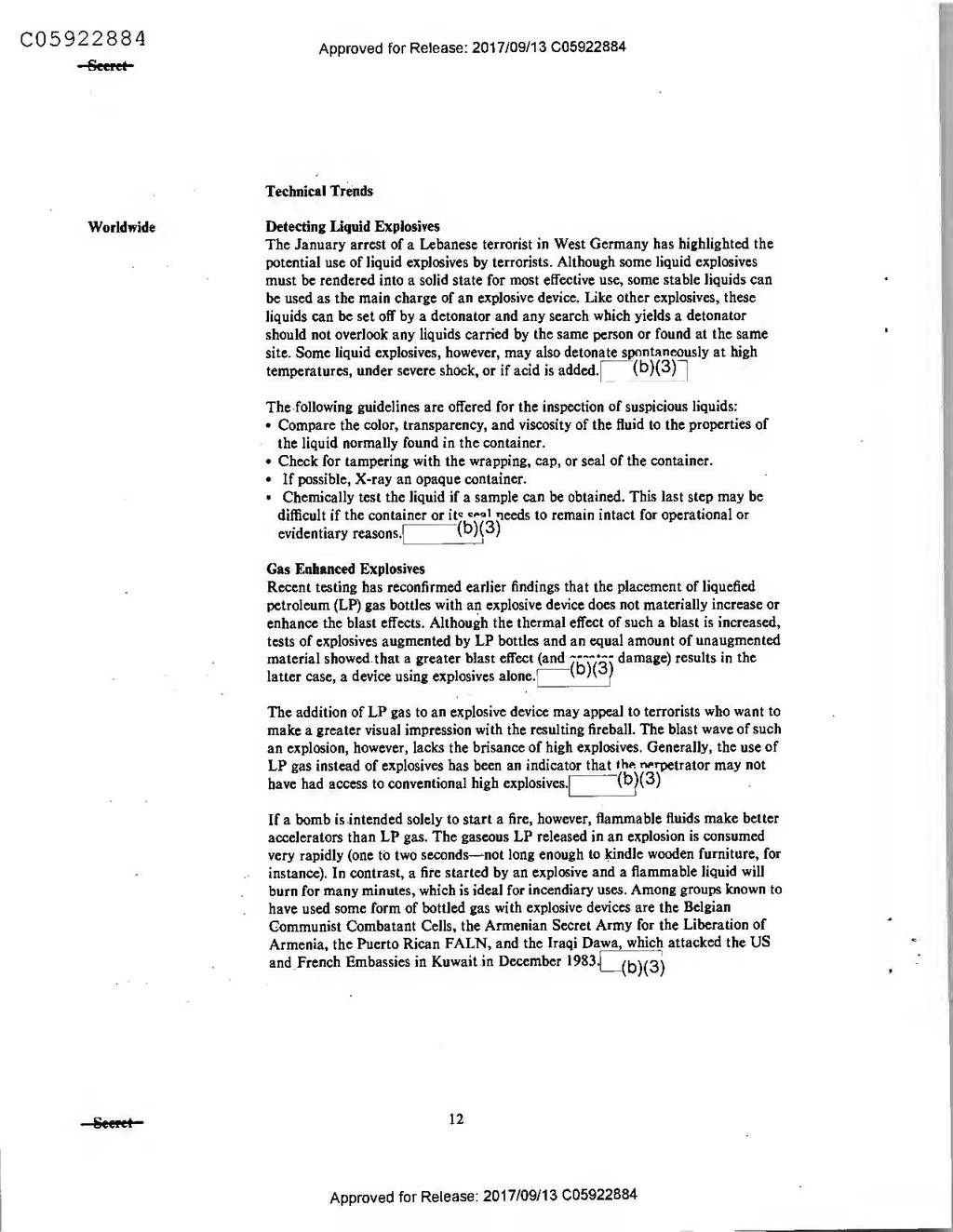Technical Trends
Worldwide
Detecting Liquid Explosives The January arrest of a Lebanese terrorist in West Germany has highlighted the potential use of liquid explosives by terrorists. Although some liquid explosives must be rendered into a solid state for most effective use, some stable liquids can be used as the main charge of an explosive device. Like other explosives, these liquids can be set off by a detonator and any search which yields a detonator should not overlook any liquids carried by the same person or found at the same site. Some liquid explosives, however, may also detonate spontaneously at high temperatures, under severe shock, or if acid is added. (b)(3)
The following guidelines are offered for the inspection of suspicious liquids: • Compare the color, transparency, and viscosity of the fluid to the properties of
the liquid normally found in the container. • Check for tampering with the wrapping, cap, or seal of the container. • If possible, X-ray an opaque container. • Chemically test the liquid if a sample can be obtained. This last step may be
difficult if the container or its seal needs to remain intact for operational or evidentiary reasons.
(b)(3)
Gas Enhanced Explosives Recent testing has reconfirmed earlier findings that the placement of liquefied petroleum (LP) gas bottles with an explosive device does not materially increase or enhance the blast effects. Although the thermal effect of such a blast is increased, tests of explosives augmented by LP bottles and an equal amount of unaugmented material showed that a greater blast effect (and damage) results in the latter case, a device using explosives alone.
-(b)(3)
The addition of LP gas to an explosive device may appeal to terrorists who want to make a greater visual impression with the resulting fireball. The blast wave of such an explosion, however, lacks the brisance of high explosives. Generally, the use of LP gas instead of explosives has been an indicator that the nerpetrator may not have had access to conventional high explosives.
(b)(3)
If a bomb is intended solely to start a fire, however, flammable fluids make better accelerators than LP gas. The gaseous LP released in an explosion is consumed very rapidly (one to two seconds—not long enough to kindle wooden furniture, for instance). In contrast, a fire started by an explosive and a flammable liquid will burn for many minutes, which is ideal for incendiary uses. Among groups known to have used some form of bottled gas with explosive devices are the Belgian Communist Combatant Cells, the Armenian Secret Army for the Liberation of Armenia, the Puerto Rican FALN, and the Iraqi Dawa, which attacked the US and French Embassies in Kuwait in December 1983.
(b)(3)
Seeret
12
Approved for Release: 2017/09/13 C05922884
